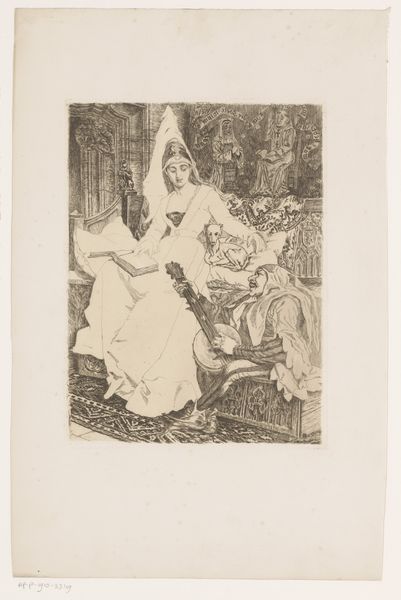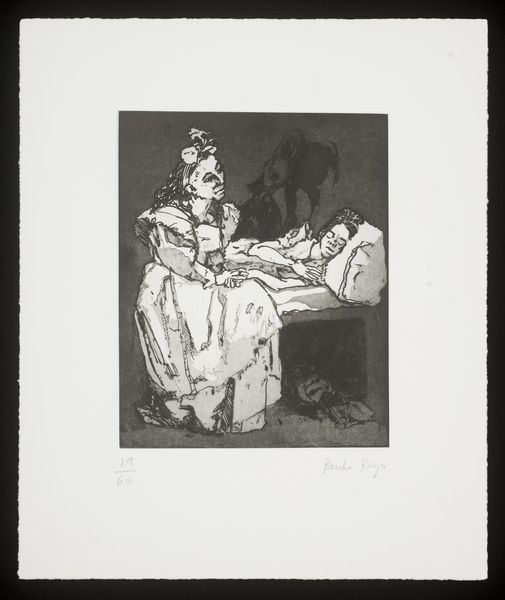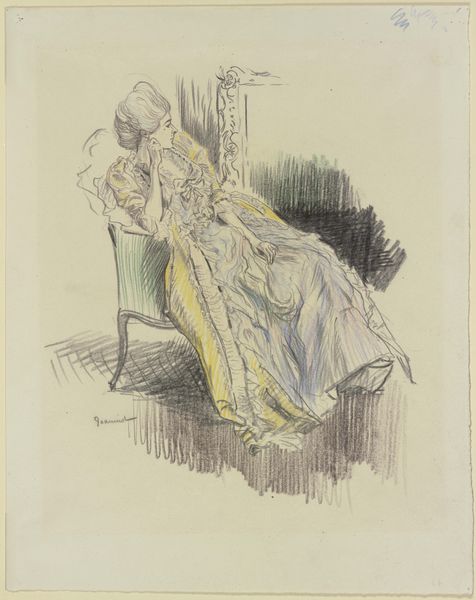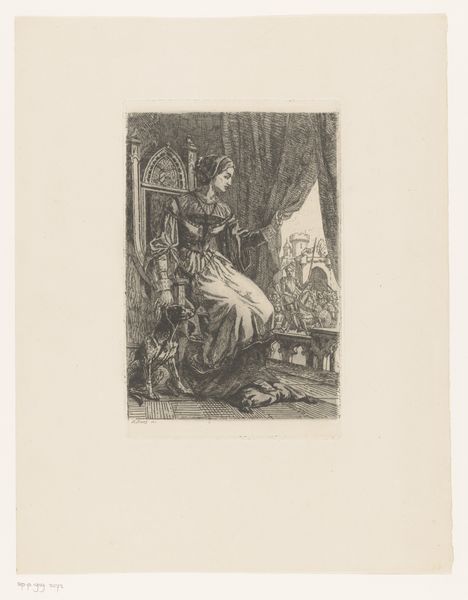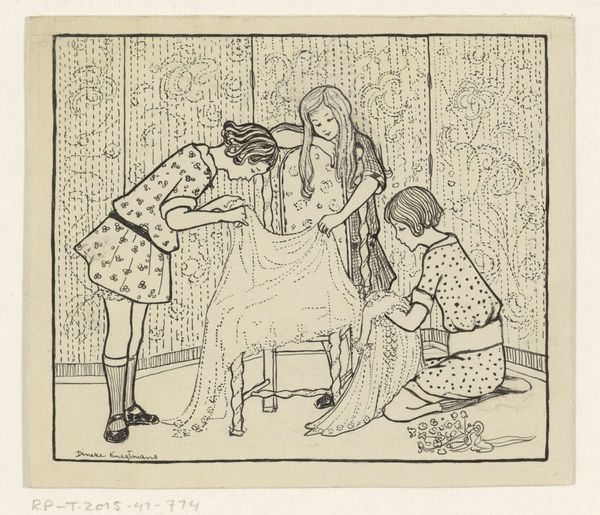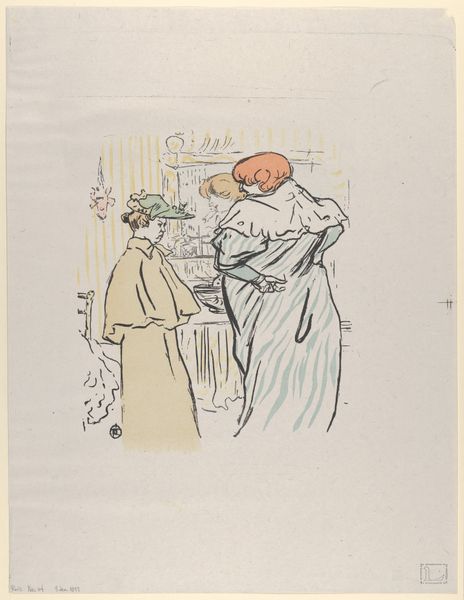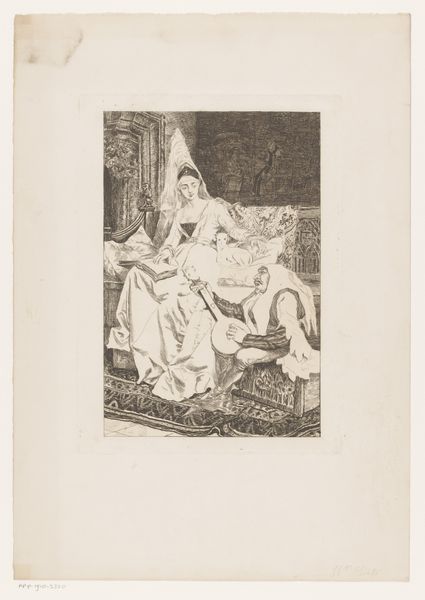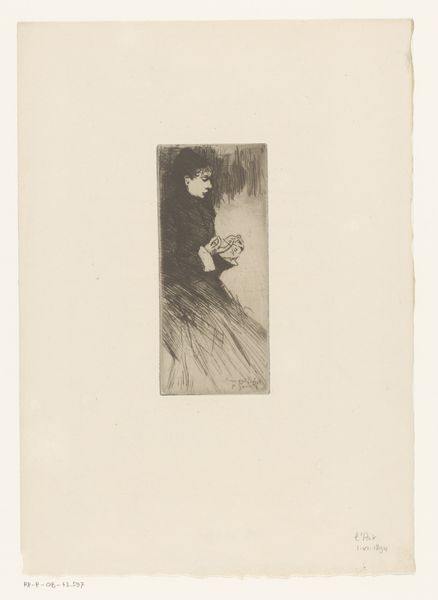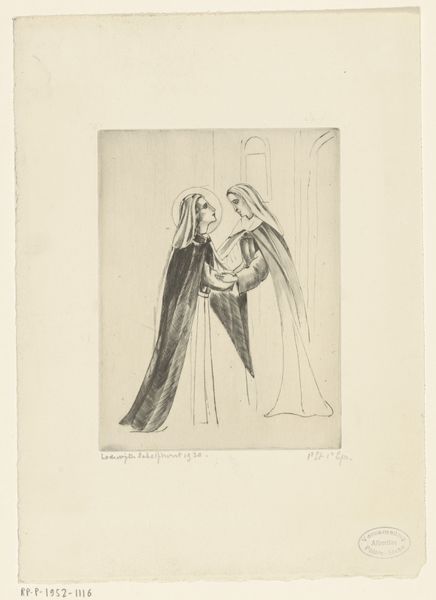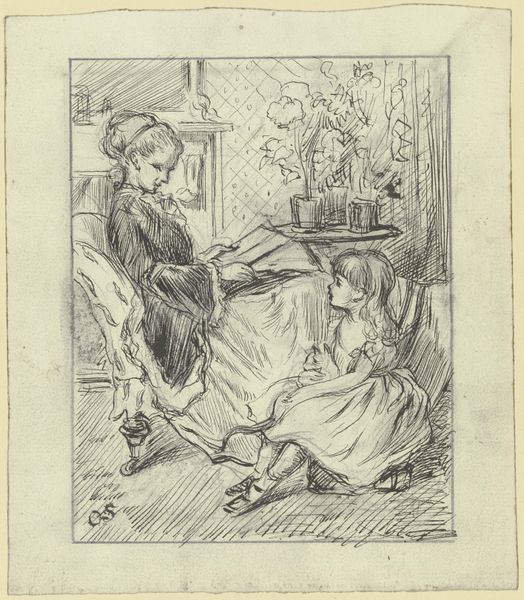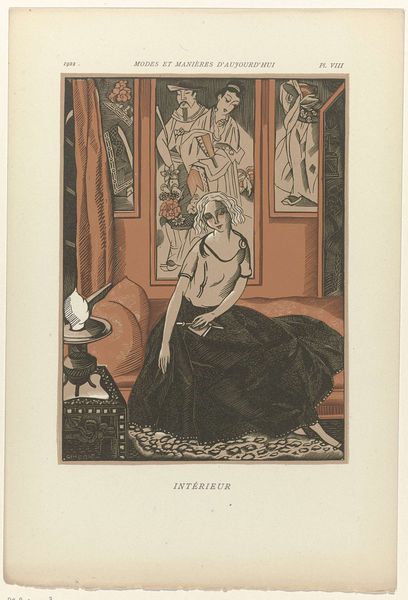
mixed-media, print, paper, engraving
#
portrait
#
mixed-media
#
art-nouveau
# print
#
paper
#
watercolour illustration
#
dress
#
engraving
Dimensions: height 247 mm, width 189 mm
Copyright: Rijks Museum: Open Domain
Editor: So, this is "Gazette du Bon Ton, 1920 - No. 1, Pl. 3: La lettre surprise" by Fernand Siméon, a mixed-media print on paper. The mood seems pretty melancholic, a sort of intimate sorrow, almost theatrical, don’t you think? How do you interpret this work? Curator: This image feels steeped in the complexities of early 20th-century gender roles, doesn't it? Notice the performative nature of both figures, staged almost. He, presenting himself with a slightly arrogant composure, seemingly controlling the narrative. She is captured mid-gesture, is she writing or has she just received the “surprise” of the letter? What do you make of her being turned away, and what kind of dialogue might that be fostering with contemporary theory regarding the position of women in society? Editor: It does make you wonder about power dynamics. Her face isn’t visible, her emotions almost masked by the posture and angle. And, is she writing or reading, either way it reduces her presence. Curator: Exactly. It pushes us to question whose story is being told and from whose perspective? Are we, as viewers, being invited to empathize, or are we kept at a distance, complicit in this very staged scene? The details in his attire almost amplify the message he controls, while hers diminishes it. It's important to reflect how art like this contributes to broader intersectional narratives about gender and power structures. Does it confirm, challenge, or somehow subvert expectations of its time? Editor: It is quite a somber message on gender constructs, staged almost as propaganda. Thank you! I'll look at early 20th century images quite differently now. Curator: Gladly. It reveals that there is still so much more to the image, the time and to ourselves.
Comments
No comments
Be the first to comment and join the conversation on the ultimate creative platform.
